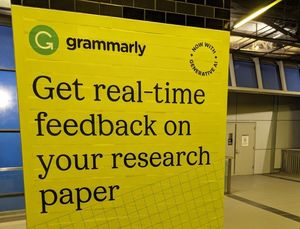It is interesting to look at the variety of ways in which newer catalog/discovery layer deployments are linking to third party services.
The list of VuFind implementations on their ‘about‘ page provides a good sample. There is some variety within the overall VuFind pattern.
Here is an example from a result for an edition of Voss by Patrick White at the National Library of Australia, providing the ability to bookmark the item in Delicious or to go through to an entry in LibraryThing.

Here is an author results page for Patrick White in the Yale beta implementation pulling in data from the Wikipedia entry for White.

I couldn’t find any Patrick White at the London School of Economics 😉 but this set of links appeared alongside a title by John Harsanyi.

Here is what the prototoype ‘Searchworks‘ at Stanford shows for one of their editions of Voss.

George Mason University has an Alpha version up which has some reviews nicely integrated, but I did not see where they were coming from.
Here is Minnesota Pals.

Clearly other systems are doing similar things. A few random thoughts, focusing on the catalog …
- Switch and destination. How much is the catalog a research tool in itself (a destination) and how much is it a finding tool for people who already pretty much have an idea of what they want and want to see if the library has it (a switch)? Of course, there is quite a bit of research on the use of the catalog; I haven’t seen a synthesis of work around this question. And yes, it can be both.
- Linking. The growth of interest in linking raises questions about identity. Am I linking to the correct entry in Wikipedia? Or to the right item in another bibliographic system? It is good when we have identifiers, but we often don’t.
- FRBR: granularity and aggregation. I was struck by the potential utility of FRBR. Where entries in one system are being linked to entries in another the level becomes important (e.g. the 2008 Virago 30th anniversary edition of Excellent Women, or any edition). This is why I was particular to say ‘an edition‘ above. For example, one might link to the same ‘edition’, to any other ‘edition’, or to all related editions. It will become more useful to be able to manage this.
- Persistent URLs. Many of the features involve linking back to the catalog (from a social bookmarking site, or potentially from a citation manager). Which requires catalog entries to have persistent URLs.
- Tags. We are in early days here. We will probably see frameworks emerge for sharing tags, greater linking of tags and controlled vocabularies, and maybe the introduction of ‘seed vocabularies’ from which readers can pick or be prompted. Libraries often think of tags in descriptive/retrieval terms. The ‘social’ aspect is important, and I was particularly interested to see the note from Michigan a while ago about providing a network infrastructure for serendipitous encounter through their tagging environment. Scale and incentives are key here so we may see various models emerge which go beyond the single catalog.



